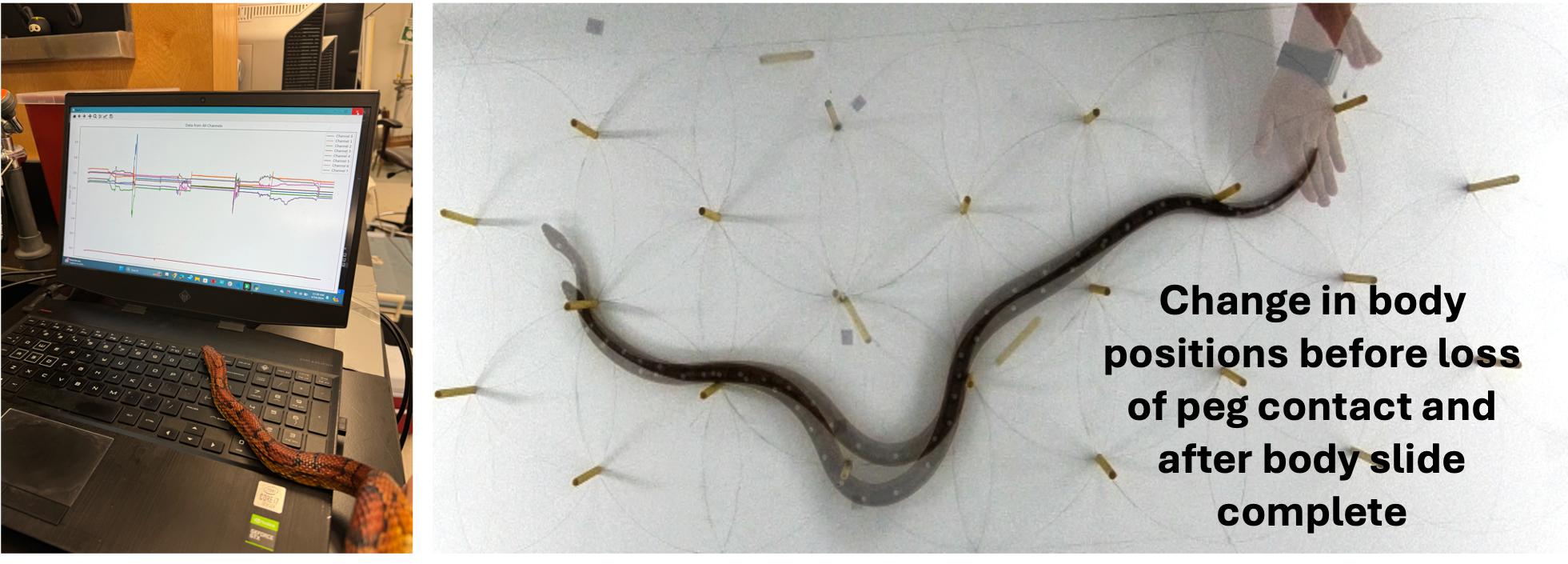Tiered MentoringUncoiling the Sssecrets of Snake Slithering BiomechanicsDr. Henry Astley, Dr. Christine Vega, and Kelsey Garner |
 |
 Overview:
Overview:
The Astley Lab studies the biomechanics of animal locomotion at the intersection between biology and physics. These projects are specifically focused on the musculoskeletal biomechanics and kinematics of snake slithering. Snake slithering uses posteriorly propagating regions of bending which push against irregularities in the environment to generate opposing reaction forces that push the snake forward. Snake slithering has highly variable kinematics and mechanical demands (force & power) which are both controlled by body postures, creating a potential conflict between these goals. We are investigating how snakes negotiate satisfying the multiple mechanical demands necessary for movement through their environment and how they simultaneously meet control requirements to produce effective, directed locomotion. Snake locomotion is studied in the lab using arrays of vertical pegs on a flat, rigid substrate to mimic environmental irregularities like rocks and sticks.
A student in this lab will have the opportunity to work on multiple, interconnected projects focused on different aspects of snake slithering. The first project investigates the effects of repeated locomotor trials and subsequent muscle fatigue on external body kinematics by measuring blood lactate levels across trials and using a MotionCapture system. The second project examines how snakes respond to the sudden loss of peg contact (e.g., environmental perturbation) to distinguish between global and local control mechanisms, mirroring “tripping” tests in limbed animals. The third project will measure forces produced by snakes during slithering using an array of custom-designed 3D printed force-sensing pegs.
What would you learn?
A student in this lab will have the opportunity to gain the following skills: understanding the scientific process and method, handling of snakes in a research setting, proficiency in 3D printing software, soldering electrical components, and experimental filming design, construction, and data collection/processing.
Commitment:
There will be a 10 hour/week expectation of a student. We will work around your class schedule as much as possible. A student in the lab will be taught to do the listed criteria above as well as any other necessary guidance.
